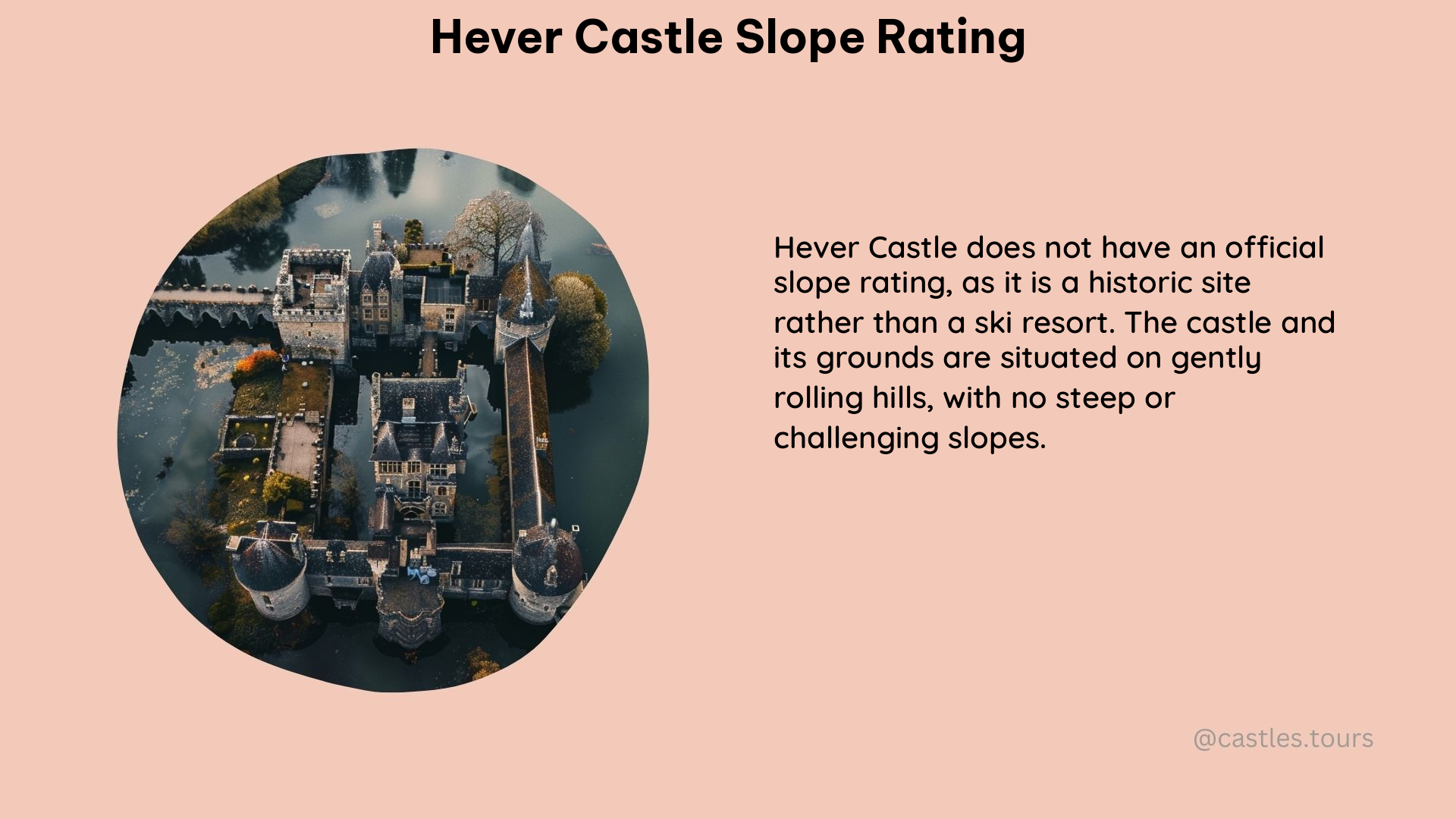The slope rating at Hever Castle Golf Club is 113, which is the average slope value for the World Handicap System (WHS). This rating is used to determine the number of strokes a player receives to play a particular golf course, making their Handicap Index portable across different courses and countries.
Understanding the Hever Castle Slope Rating
The slope rating is a numerical value that represents the relative difficulty of a golf course for a bogey golfer, which is a player who typically shoots around 90 on a par 72 course. The slope rating ranges from 55 to 155, with a higher number indicating a more challenging course.
The Hever Castle Golf Club’s slope rating of 113 means that the course is considered to be of average difficulty for a bogey golfer. This rating is used in conjunction with the course rating, which is a measure of the course’s difficulty for a scratch golfer (a player who typically shoots par or better).
Factors Influencing the Hever Castle Slope Rating

The slope rating at Hever Castle Golf Club is influenced by several factors, including:
-
Course Length: The length of the golf course can have a significant impact on the slope rating. Longer courses tend to have higher slope ratings, as they require more skill and distance to navigate.
-
Terrain and Elevation Changes: Hever Castle Golf Club is situated on undulating terrain, with several holes featuring significant elevation changes. These changes in elevation can make the course more challenging for golfers, contributing to the slope rating.
-
Hazards and Obstacles: The presence of hazards, such as water features, bunkers, and trees, can increase the difficulty of the course and, consequently, the slope rating.
-
Hole Difficulty: The individual difficulty of each hole on the course is also taken into account when determining the slope rating. Holes with narrow fairways, small greens, or other challenging features can contribute to a higher slope rating.
-
Course Conditions: The overall condition of the golf course, including the quality of the fairways, greens, and other playing surfaces, can also impact the slope rating. Well-maintained courses tend to have lower slope ratings.
Applying the Hever Castle Slope Rating
The Hever Castle slope rating of 113 is used to calculate the number of strokes a player receives when playing the course. This is done by taking the player’s Handicap Index and multiplying it by the slope rating, then dividing the result by 113. The resulting number is the player’s Course Handicap, which represents the number of strokes they can deduct from their gross score to determine their net score.
For example, if a player has a Handicap Index of 18 and is playing at Hever Castle Golf Club, their Course Handicap would be calculated as follows:
Course Handicap = (Handicap Index × Slope Rating) / 113
Course Handicap = (18 × 113) / 113
Course Handicap = 18
In this case, the player would receive 18 strokes to play the course, which would be deducted from their gross score to determine their net score.
Comparing Hever Castle Slope Rating to Other Courses
To put the Hever Castle slope rating of 113 into perspective, let’s compare it to the slope ratings of some other well-known golf courses:
| Course | Slope Rating |
|---|---|
| Augusta National (Masters Course) | 134 |
| Pebble Beach Golf Links | 144 |
| Oakmont Country Club | 155 |
| Hever Castle Golf Club | 113 |
| Pinehurst No. 2 | 146 |
As you can see, the Hever Castle slope rating of 113 is on the lower end of the spectrum, indicating that it is a relatively accessible course for golfers of varying skill levels. However, it’s important to note that the slope rating is just one factor in determining the overall difficulty of a golf course, and other factors, such as course length, hazards, and playing conditions, can also play a significant role.
Strategies for Navigating the Hever Castle Golf Course
Given the Hever Castle slope rating of 113, golfers can employ the following strategies to navigate the course effectively:
-
Club Selection: Carefully consider the club selection for each shot, taking into account the distance, terrain, and hazards. This can help minimize the impact of the course’s difficulty on your score.
-
Course Management: Develop a strategic approach to the course, focusing on hitting the fairways and avoiding hazards. This may involve playing conservatively on certain holes or adjusting your shot selection based on the course conditions.
-
Putting: Pay close attention to the speed and break of the greens, as putting can be a significant factor in determining your score on a course with a moderate slope rating.
-
Practice and Preparation: Spend time practicing on similar courses or terrain to develop the skills and confidence needed to perform well at Hever Castle Golf Club.
-
Enjoy the Experience: Remember to savor the experience of playing at Hever Castle, a historic and picturesque golf course with a rich heritage. Embrace the challenge and the opportunity to test your skills on a course with an average slope rating.
Conclusion
The Hever Castle slope rating of 113 provides valuable insight into the relative difficulty of the golf course, helping players understand the number of strokes they can expect to receive and the strategies they can employ to navigate the course successfully. By understanding the factors that contribute to the slope rating and how to apply it in practice, golfers can enhance their enjoyment and performance at Hever Castle Golf Club.
Reference:
– World Handicap System (WHS) Explained
– Hever Castle Golf Club
– Golf Digest Course Rankings
